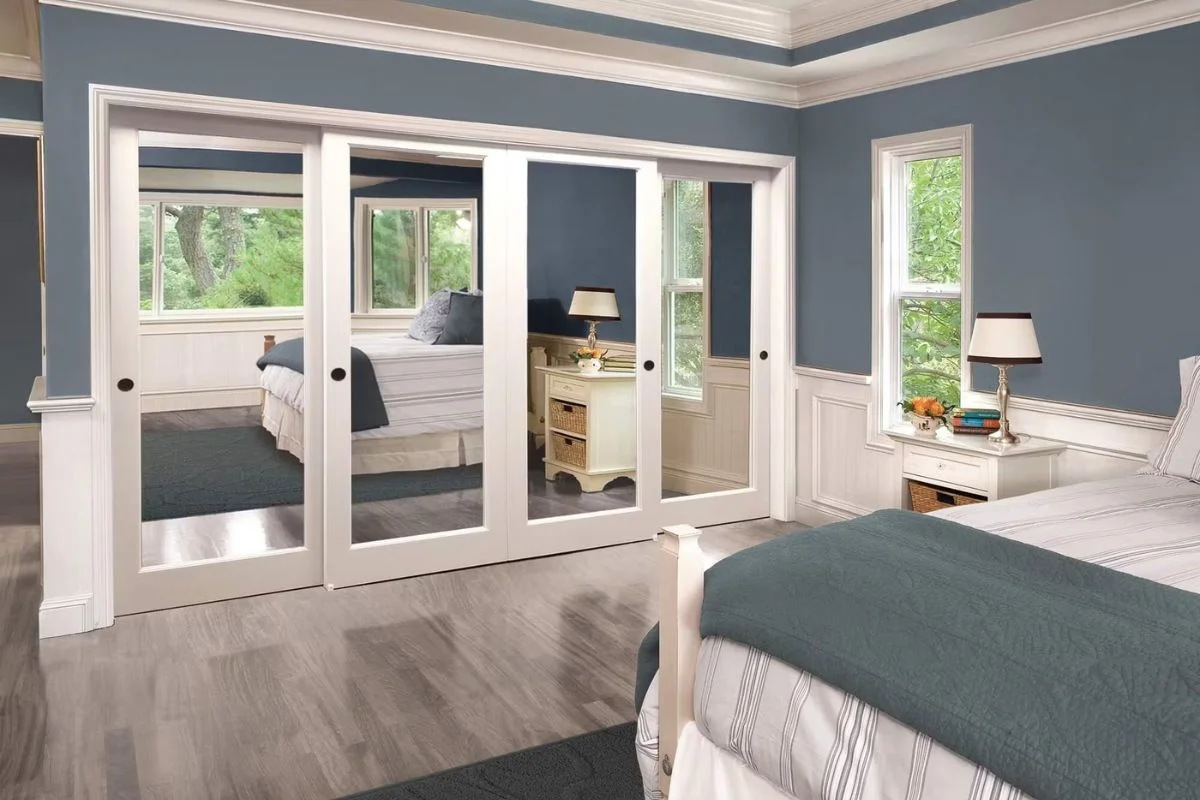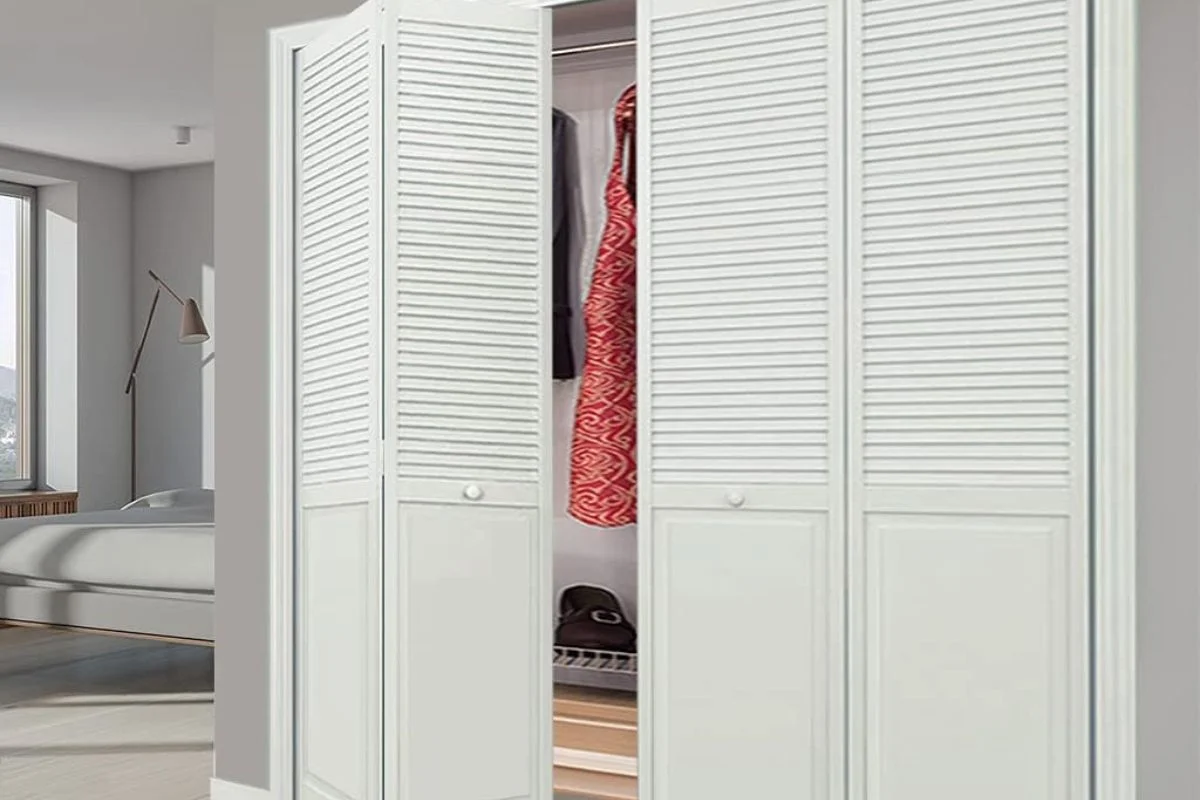
In the realm of home design, technological advancements have revolutionized even the most mundane aspects of our living spaces. From smart thermostats to automated lighting systems, innovation continues to reshape the way we interact with our homes. One area that has seen significant transformation is closet door design, where the integration of smart technology has ushered in a new era of convenience, functionality, and style.
Smart technology in closet door design goes beyond traditional concepts of storage and organization. It introduces a range of innovative features that not only streamline daily routines but also elevate the overall user experience. From automated opening and closing mechanisms to integrated lighting and organizational systems, these smart features offer practical solutions to common challenges faced in closet management.
In this article, we will explore the exciting world of smart technology in closet door design. We’ll delve into the various features and functionalities that make these doors stand out, examine their benefits and applications, and consider how they are shaping the future of home organization and convenience. Whether you’re a tech enthusiast or simply seeking ways to enhance your home’s functionality, join us as we uncover the possibilities that smart closet doors have to offer.
Introduce the importance of closet doors in home design and organization.
Closet doors might seem like mundane fixtures in our homes, but they serve a crucial role in maintaining order, enhancing aesthetics, and optimizing space utilization. These often-overlooked components play a significant part in the overall functionality and organization of our living spaces.
Organization and Storage: Closet doors provide a barrier that hides clutter and helps maintain a tidy appearance in our living spaces. They conceal our belongings, from clothes and shoes to linens and accessories, keeping them out of sight and neatly organized.
Privacy and Concealment: Beyond mere storage, closet doors offer privacy and concealment for personal belongings. They create boundaries within our homes, delineating private areas from public spaces and providing a sense of security and intimacy.
Aesthetic Appeal: Closet doors contribute to the overall aesthetic appeal of our interior spaces. They come in various styles, materials, and finishes, allowing homeowners to express their personal taste and enhance the visual appeal of their homes. Whether sleek and modern or rustic and traditional, closet doors can complement the design theme of any room.
Space Optimization: In homes where space is at a premium, closet doors play a crucial role in space optimization. Sliding doors, pocket doors, and bi-fold doors offer space-saving alternatives to traditional hinged doors, allowing for efficient use of available floor space without sacrificing functionality or style.
Sound and Light Control: Closet doors help control sound transmission and light penetration within our homes. They act as barriers against noise pollution, creating a quieter and more peaceful environment. Additionally, closet doors with opaque panels or frosted glass can filter natural light, providing soft illumination while maintaining privacy.
Types of Closet Doors
Closet doors come in a variety of styles and designs, each offering unique features and benefits to suit different spaces and preferences. Understanding the various types of closet doors can help homeowners make informed decisions when selecting the right option for their needs. Here are some common types of closet doors:
Hinged Doors: Hinged doors are the most traditional and widely used type of closet doors. They operate on hinges attached to one side of the door frame, swinging open and closed like traditional interior doors. Hinged doors are available in various materials, such as wood, metal, and composite, and can be customized with different finishes and hardware options.
Sliding Doors: Sliding closet doors offer a sleek and modern design while maximizing space efficiency. These doors slide horizontally along a track mounted above the doorway, allowing easy access to the closet space without the need for swinging clearance. Sliding doors are ideal for small rooms or tight spaces where traditional hinged doors may be impractical.
Bi-fold Doors: Bi-fold doors consist of two panels that fold in the middle when opened, creating a space-saving solution for closets with limited clearance. They operate on a track system and fold neatly against the wall, providing easy access to the closet interior. Bi-fold doors are available in various materials and styles, making them versatile options for both modern and traditional spaces.
Pocket Doors: Pocket doors are similar to sliding doors but slide into a recessed pocket within the wall when opened, completely disappearing from view. These doors are ideal for maximizing space and creating a seamless transition between rooms. Pocket doors are commonly used for closets in bedrooms, bathrooms, and other areas where space is limited.
Accordion Doors: Accordion doors consist of multiple panels that fold and stack against each other when opened, similar to an accordion or folding screen. These doors are versatile and can be used for closets, room dividers, or storage areas. Accordion doors offer flexibility in terms of opening width and can be customized to fit various space requirements.
Factors to Consider When Choosing Closet Doors
When selecting closet doors for your home, it’s essential to consider several factors to ensure that you choose the right option that meets your functional and aesthetic needs. Here are some key factors to consider when choosing closet doors:
Space Constraints: Assess the available space in the room where the closet is located. Consider the clearance required for different types of doors, such as hinged, sliding, or bi-fold doors, and choose a door style that fits within the available space without obstructing furniture or walkways.
Room Decor and Design Theme: Consider the overall decor and design theme of the room when selecting closet doors. Choose doors that complement the existing interior style, whether it’s modern, traditional, minimalist, or rustic. Consider the material, color, and finish of the doors to ensure they harmonize with the room’s aesthetics.
Functionality and Accessibility: Evaluate how frequently the closet will be accessed and how you prefer to interact with the doors. Sliding doors are ideal for maximizing space and providing easy access to the closet interior, while hinged doors offer a more traditional look and feel. Consider your lifestyle and preferences when choosing the door operation style.
Material and Durability: Select closet doors made from durable materials that can withstand daily wear and tear. Common materials for closet doors include wood, metal, glass, and composite materials. Choose a material that is sturdy, easy to maintain, and resistant to warping, scratching, or fading over time.
Budget Considerations: Set a budget for your closet door project and explore options within your price range. Consider the cost of materials, hardware, installation, and any additional features or customization options. Balance your budget with the quality and durability of the doors to ensure you get the best value for your investment.
Privacy and Light Control: Consider the level of privacy and light control you need for the closet space. Solid doors provide maximum privacy and concealment, while glass or frosted doors allow natural light to filter through while maintaining privacy. Choose a door style that aligns with your privacy and light preferences.
Maintenance Requirements: Evaluate the maintenance needs of different door materials and finishes. Some materials may require regular cleaning, polishing, or refinishing to maintain their appearance and functionality. Choose doors that are easy to clean and maintain, especially in high-traffic areas like bedrooms and entryways.
Customizing Closet Doors to Match Your Decor
Customizing closet doors allows homeowners to personalize their living spaces and create cohesive design themes throughout their homes. By incorporating elements that complement existing decor, closet doors can seamlessly blend with the overall aesthetic and enhance the visual appeal of the room. Here are some ways to customize closet doors to match your decor:
Paint and Finish Options: Explore different paint colors and finishes to customize closet doors according to your decor style. Whether you prefer bold and vibrant hues, subtle neutrals, or textured finishes, painting the doors can instantly transform their appearance and tie them into the room’s color scheme.
Hardware Selection: Choose hardware that complements the style and finish of your closet doors. Consider options such as knobs, handles, and hinges in various materials and designs. Sleek and modern hardware can enhance contemporary decor, while traditional styles can add a classic touch to more traditional spaces.
Panel Configuration: Customize the panel configuration of closet doors to suit your design preferences. Opt for raised panels, recessed panels, or flat panels depending on the desired aesthetic. Panel configurations can add depth and visual interest to the doors, enhancing their overall appeal.
Glass Inserts: Incorporate glass inserts into closet doors to add elegance and sophistication to the room. Choose from clear, frosted, or textured glass options to create a stylish focal point while allowing natural light to filter through. Glass inserts can visually open up the space and create a sense of airiness and brightness.
Molding and Trim: Enhance the architectural interest of closet doors by adding molding and trim details. Crown molding, chair rails, and baseboards can frame the doors and create a cohesive look with other architectural elements in the room. Select trim styles that complement the overall decor style and add visual dimension to the doors.
Customized Inserts and Panels: Consider customized inserts and panels to add character and personality to closet doors. Incorporate decorative panels, lattice designs, or custom artwork to make a statement and reflect your unique style. Custom inserts allow for endless design possibilities and can serve as conversation pieces in the room.
Integrated Mirrors: Install integrated mirrors on closet doors to add functionality and style to the space. Mirrored doors can visually expand the room, reflect natural light, and create a sense of depth and dimension. Choose from full-length mirrors, segmented mirrors, or decorative mirror patterns to complement your decor.
Maintaining and Cleaning Closet Doors: Tips and Tricks
Proper maintenance and regular cleaning are essential for preserving the appearance and functionality of closet doors. By following these tips and tricks, homeowners can ensure that their closet doors remain in optimal condition for years to come:
Dust Regularly: Dust accumulation can dull the finish of closet doors and make them appear dingy. Use a soft, dry cloth or a microfiber duster to gently remove dust and debris from the surface of the doors regularly. Pay attention to grooves, crevices, and decorative details where dust tends to accumulate.
Use Mild Cleaning Solutions: When cleaning closet doors, opt for mild cleaning solutions to avoid damaging the finish or material. Mix a small amount of mild dish soap or detergent with warm water and use a soft sponge or cloth to gently wipe down the doors. Avoid harsh chemicals or abrasive cleaners that can scratch or dull the surface.
Spot Clean Stains Promptly: If spills or stains occur on closet doors, spot clean them promptly to prevent them from setting in. Use a damp cloth with mild soap and water to gently blot the stained area, then dry thoroughly with a clean towel. Avoid rubbing or scrubbing vigorously, as this can damage the finish or material.
Clean Glass Panels Carefully: If your closet doors have glass panels, use a glass cleaner and a lint-free cloth to clean them effectively. Spray the glass cleaner onto the cloth rather than directly onto the glass to prevent overspray. Wipe the glass in a circular motion to remove fingerprints, smudges, and streaks, then buff with a dry cloth for a sparkling finish.
Inspect Hardware Regularly: Periodically inspect the hardware, such as hinges, handles, and tracks, for signs of wear or damage. Tighten loose screws or bolts as needed and lubricate moving parts with a silicone-based lubricant to ensure smooth operation. Replace any damaged or worn hardware to prevent further issues.
Avoid Excessive Moisture: Excessive moisture can warp or damage wooden closet doors and promote mold or mildew growth. Avoid using excess water when cleaning and ensure that the doors are thoroughly dried after cleaning to prevent moisture buildup. Use a dehumidifier in areas prone to high humidity to maintain optimal conditions.
Protect Wooden Doors: If your closet doors are made of wood, apply a protective finish or sealant to prevent moisture damage and maintain the integrity of the wood. Follow manufacturer recommendations for sealing and resealing wooden doors periodically to prolong their lifespan and enhance their appearance.
Conclusion
In conclusion, closet doors play a vital role in home design and organization, offering practical functionality and aesthetic appeal to living spaces. From maximizing space utilization to enhancing privacy and concealing clutter, closet doors serve as essential elements in maintaining a tidy and well-organized home environment.


